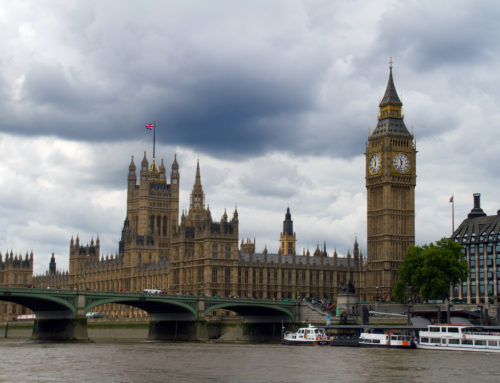The decision not to cut police budgets allows PCCs and Chief Constables an unexpected space to push transformation.
We all thought that the thin blue line was under threat, and that in last week’s budget the Chancellor would make good on an intention to reduce police budgets by at least 25 percent, in line with savings made elsewhere.
In the run up to this decision, PCCs and Chief Constables acted individually to protect their section of the thin blue line. Government continued with their mantra that police reform is working and that crime is falling. Arguments were made about how little Ministers understood the demands faced by the modern police service, and policing leaders were accused of shroud waving and an inability to face up to their responsibilities and manage their fair share of a reduced operating budget.
Rather than coming together for sensible and much needed debate, the differences between the Government and the police positions were amplified and polarised into two needlessly adversarial positions. Evidence was ignored, statistics were wilfully twisted and ideology took centre stage. Policing looked to be on the edge of a cliff, and every day the public were told that our safety was at risk by a current or former senior police officer.
However, world incidents intervened, and the tragic events of Paris afforded the Chancellor the opportunity to surprise everyone by announcing that the police service would be exempted from cuts. The reality is slightly different as whilst police budgets have been protected from cuts, promises made to increase the level of counter-terrorism capability and investment in technology mean that once those central funds have been top-sliced from the police budget, the amount remaining to Forces will be less than it is currently. The Home Office will announce the actual operating budgets given to PCCs and Chief Constables later this month, but a new funding formula will not now be introduced until 2017/18.
There is still more detail to be announced, however it is clear that policing is at a crossroads.
Having been granted a reprieve, there are two broad options available to PCCs and Chief Constables. Firstly they can focus on fighting for a ‘fairer’ allocation of the police grant that better reflects the individual circumstances of their particular Force, or they can concentrate on the business of transforming their Force and driving efficiency and effectiveness through the many levers at their disposal.
For those Forces that choose to focus on fighting for a perceived fairer slice of the cake, they must recognise that Government will not consider any case for increased funding without absolute clarity (through HMIC) that they have exhausted every single option available to them. Policing leaders must be able to demonstrate that their collaboration with other Forces is running apace, and will deliver expected savings not only in the medium to long term, but also within 2016/17. They must be able to demonstrate an optimum workforce mix, with practically all uniformed officers deployed and available to the frontline, crime and investigation functions staffed by an appropriate mix of specialist civilian staff and operational officers given the crime profile for their area and ever growing cyber and child sexual exploitation threats, and supported by analytical teams that can problem solve and identify how resources should best be used and deployed. Such Forces will already be widely collaborating and partnering with other bluelight and statutory partners, but in the future these partnerships will have to demonstrate credible ambition to integrate further, beyond just working together but sharing and pooling budgets, people, equipment and estates and – crucially – this ambition will have to be underpinned by a shared system of prioritisation, action and governance.
In order to make a persuasive demand for additional funding, over the next year these policing leaders will have to show that the structure and functioning of their Force is wholly robust and capable of meeting future demands, aside from a sole reservation that additional funds are needed in order to meet expected demands. The majority of Forces, like other organisations, have and will struggle to evidence that they have fully exploited all options. Currently, HMIC has graded 5 forces as outstanding, 29 forces as good, 8 forces as requiring improvement and 1 force as inadequate on the efficiency strand of their PEEL assessments. This is the scale of the challenge facing policing leaders in trying to secure additional funding.
Of course, by offering a choice of only two options (fight for funding or focus on transformation) I have created exactly the same false dilemma that we have experienced over the past several months in the police funding debate. PCCs and Chiefs will likely choose to focus on both elements simultaneously, given they surely will not be able to achieve a bigger allocation without demonstrating they are using their current one wisely.
However, many PCCs may choose to stand on a platform of fighting for a fairer deal for their Force, or protecting the front line; indeed many sitting PCCs are already doing so. Such PCCs will need to guard against their funding campaign taking primacy and ensure that they take this unexpected opportunity of standstill funding to grasp the many nettles within their purview.
Now is not the time for PCCs to fight over how big their slice is, it is the time to make the most of it.














Leave A Comment